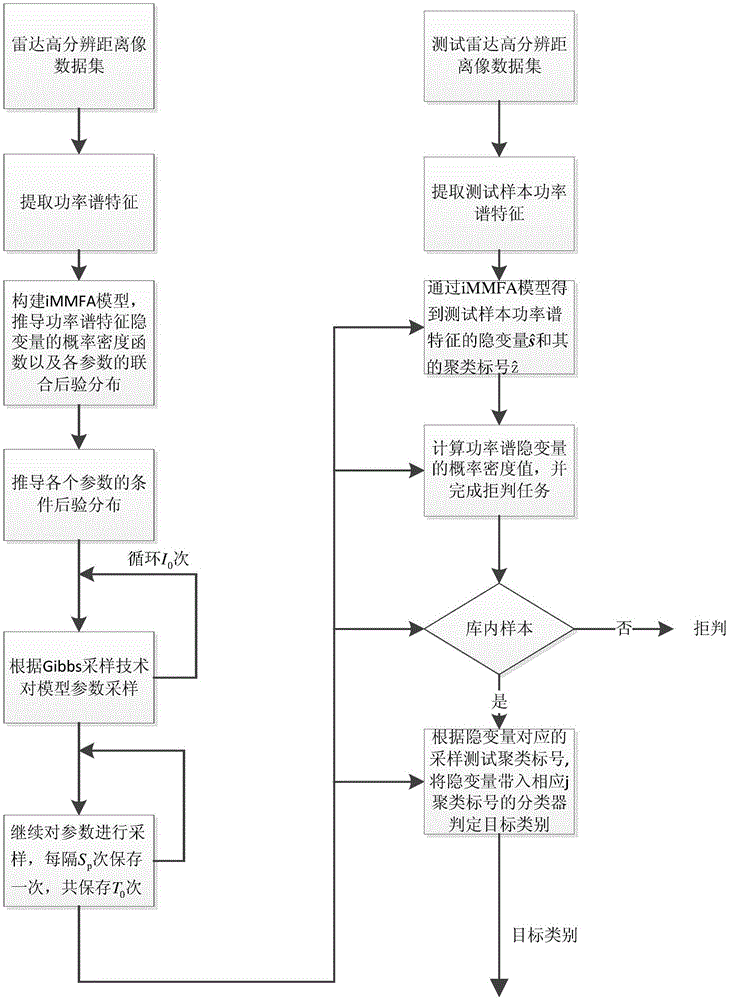Radar high-resolution range profile target recognition method based on iMMFA (infinite max-margin factor analysis) model
A high-resolution range image and target recognition technology, which is applied in the field of radar high-resolution range image HRRP target recognition, can solve problems such as unsupervised, affecting classification performance, and difficult to guarantee data separability
- Summary
- Abstract
- Description
- Claims
- Application Information
AI Technical Summary
Problems solved by technology
Method used
Image
Examples
Embodiment Construction
[0107] The following will clearly and completely describe the technical solutions in the embodiments of the present invention with reference to the accompanying drawings in the embodiments of the present invention. Obviously, the described embodiments are only some, not all, embodiments of the present invention. Based on the embodiments of the present invention, all other embodiments obtained by persons of ordinary skill in the art without making creative efforts belong to the protection scope of the present invention.
[0108] The present invention proposes that iMMFA unifies the FA model, the TSB-DPM model and the LVSVM classifier to jointly solve under the Bayesian framework, where LVSVM (Latent variable SVM, latent variable SVM) is used as the classifier, see [PolsonN.G. , ScottS.L..Dataaugmentationforsupportvectormachines[J].BayesianAnalysis, 2011, vol.6(1), 1-24], the introduction of FA model to achieve.
[0109] refer to figure 1 , the specific implementation of the pr...
PUM
 Login to View More
Login to View More Abstract
Description
Claims
Application Information
 Login to View More
Login to View More - R&D
- Intellectual Property
- Life Sciences
- Materials
- Tech Scout
- Unparalleled Data Quality
- Higher Quality Content
- 60% Fewer Hallucinations
Browse by: Latest US Patents, China's latest patents, Technical Efficacy Thesaurus, Application Domain, Technology Topic, Popular Technical Reports.
© 2025 PatSnap. All rights reserved.Legal|Privacy policy|Modern Slavery Act Transparency Statement|Sitemap|About US| Contact US: help@patsnap.com



